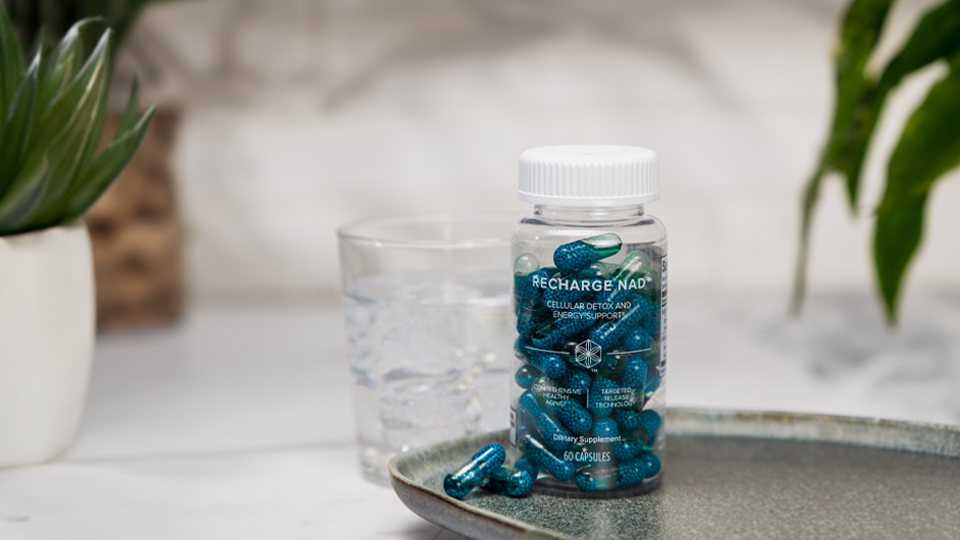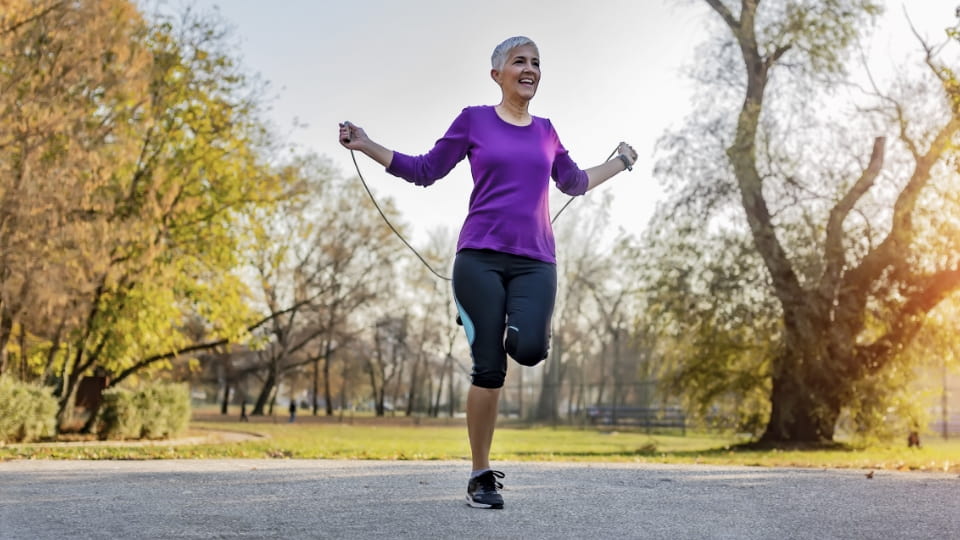Athletes have used creatine as an extra competitive edge for over two decades. But new research suggests creatine’s benefits reach far beyond athletic performance. Currently, this vital substrate for cellular energy is being investigated for its beneficial effects on the brain, aging, and even bones (1).
Bone health, in particular, is a primary concern for women. Women past menopause are especially vulnerable to weakening bones that can lead to higher risk of fractures, frailty, and loss of function in everyday activities (2). In the same way that exercise increases muscle strength, exercise offers a stimulus to bone tissue, making it stronger by increasing the bone’s density.
While not a replacement for a nutrient-rich diet and solid exercise program, creatine might offer valuable support in the combat against age-related decreases in bone mineral density (BMD). BMD refers to the amount of minerals, like calcium, present in bones. The greater the BMD, the denser and stronger the bone, and the less prone it is to fractures and degeneration.
Creatine has the potential to benefit bone health in several ways. Supplementing with creatine might offer an indirect benefit for boosting BMD. Creatine increases energy stores in muscles, allowing for better workouts (3-5). Stronger muscles pull harder on bone, which in turn can create a stronger stimulus for increasing BMD (6).
Creatine may also have a direct effect on bone apart from exercise. Bone cells rely on creatine for cellular reactions (7). Boosting the body’s stores of creatine can support the metabolic activity of bone cells that are involved in bone formation and absorbing minerals, helping to make bones strong (8).
In a recent yearlong study, investigators gave postmenopausal women either roughly 7 grams of a creatine supplement or placebo (9). Both groups followed a simple weight training program three times per week and had their diets monitored using a food journal. At the conclusion of the study, the creatine group was able to maintain BMD, as well as slightly increase bone strength and muscle strength. The placebo group, on the other hand, ended up losing a significant amount of BMD in the femur, which is the largest leg bone and prone to fracture (1, 10). This study demonstrated that creatine supplements combined with weight training were able to help women maintain BMD and keep aging bones healthier.
The optimal time to take creatine for older adults appears to be around the workout period (11). The greater benefits from taking creatine just prior to a workout, for example, may be due to an increase in blood flow in the muscle during resistance training, which can result in greater creatine transport and accumulation in exercising muscles (11).
Used as a pre-workout, supplementation is found to be more effective for increasing muscle creatine uptake and concentration and could lead to better results (12, 13). An efficacious amount of creatine is about 3 grams—the amount in a serving of AMPED™ Power— and is a simple and effective strategy to get the most out of a workout.
Based on the recent research, creatine appears to have joined the growing list of bone-supporting supplements such as calcium and vitamin D—as found in Ageless Essentials™ Daily Pack. When combined with quality amounts of dietary protein and exercise, women look to gain from keeping their muscles and bones stronger with age (14).
References
- Tarride JE, Hopkins RB, Leslie WD, Morin S, Adachi JD, Papaioannou A, Bessette L, Brown JP & Goeree R. The burden of illness of osteoporosis in Canada. Osteoporos Int. 2012 Nov; 23(11):2591-600.
- Johnell O & Kanis J. Epidemiology of osteoporotic fractures. Osteoporos Int. 2005 Mar; 16 Suppl 2:S3-7.
- Chrusch MJ, Chilibeck PD, Chad KE, Davison KS & Burke DG. Creatine supplementation combined with resistance training in older men. Med Sci Sports Exerc. 2001 Dec; 33(12):2111-7.
- Gotshalk LA, Kraemer WJ, Mendonca MA, Vingren JL, Kenny AM, Spiering BA, Hatfield DL, Fragala MS & Volek JS. Creatine supplementation improves muscular performance in older women. Eur J Appl Physiol. 2008 Jan; 102(2):223-31.
- Gotshalk LA, Volek JS, Staron RS, Denegar CR, Hagerman FC & Kraemer WJ. Creatine supplementation improves muscular performance in older men. Med Sci Sports Exerc. 2002 Mar; 34(3):537-43.
- Chilibeck PD, Sale DG & Webber CE. Exercise and bone mineral density. Sports Med. 1995 Feb; 19(2):103-22.
- Wallimann T & Hemmer W. Creatine kinase in non-muscle tissues and cells. Mol Cell Biochem. 1994 Apr-May; 133-134:193-220.
- Gerber I, Gwynn I, Alini M & Wallimann T. Stimulatory effects of creatine on metabolic activity, differentiation and mineralization of primary osteoblast-like cells in monolayer and micromass cell cultures. Eur Cell Mater. 2005 Jul 15; 10:8-22.
- Chilibeck PD, Candow DG, Landeryou T, Kaviani M & Paus-Jenssen L. Effects of Creatine and Resistance Training on Bone Health in Postmenopausal Women. Med Sci Sports Exerc. 2015 Aug;47(8):1587-95
- Lorrain J, Paiement G, Chevrier N, Lalumière G, Laflamme GH, Caron P & Fillion A. Population demographics and socioeconomic impact of osteoporotic fractures in Canada. Menopause. 2003 May-Jun;10(3):228-34.
- Candow DG, Vogt E, Johannsmeyer S, Forbes SC & Farthing JP. Strategic creatine supplementation and resistance training in healthy older adults. Appl Physiol Nutr Metab. 2015 Jul; 40(7):689-94.
- Harris RC, Soderlund K & Hultman E. Elevation of creatine in resting and exercised muscle of normal subjects by creatine supplementation. Clin Sci (Lond). 1992 Sep; 83(3):367-74.
- Robinson TM, Sewell DA, Hultman E & Greenhaff PL. Role of submaximal exercise in promoting creatine and glycogen accumulation in human skeletal muscle. J Appl Physiol (1985). 1999 Aug; 87(2):598-604.
- Gaffney-Stomberg E, Insogna KL, Rodriguez NR & Kerstetter JE. Increasing dietary protein requirements in elderly people for optimal muscle and bone health. J Am Geriatr Soc. 2009 Jun; 57(6):1073-9.





